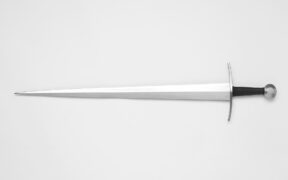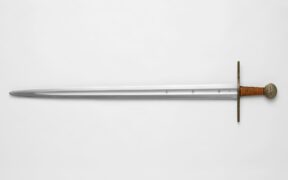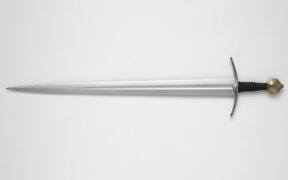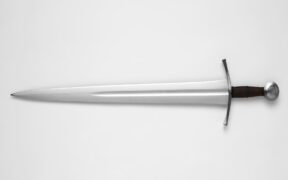Oakeshott Type XIII: The European Knight’s Massive Cutting Sword
NO AI USED This Article has been written and edited by our team with no help of the AI
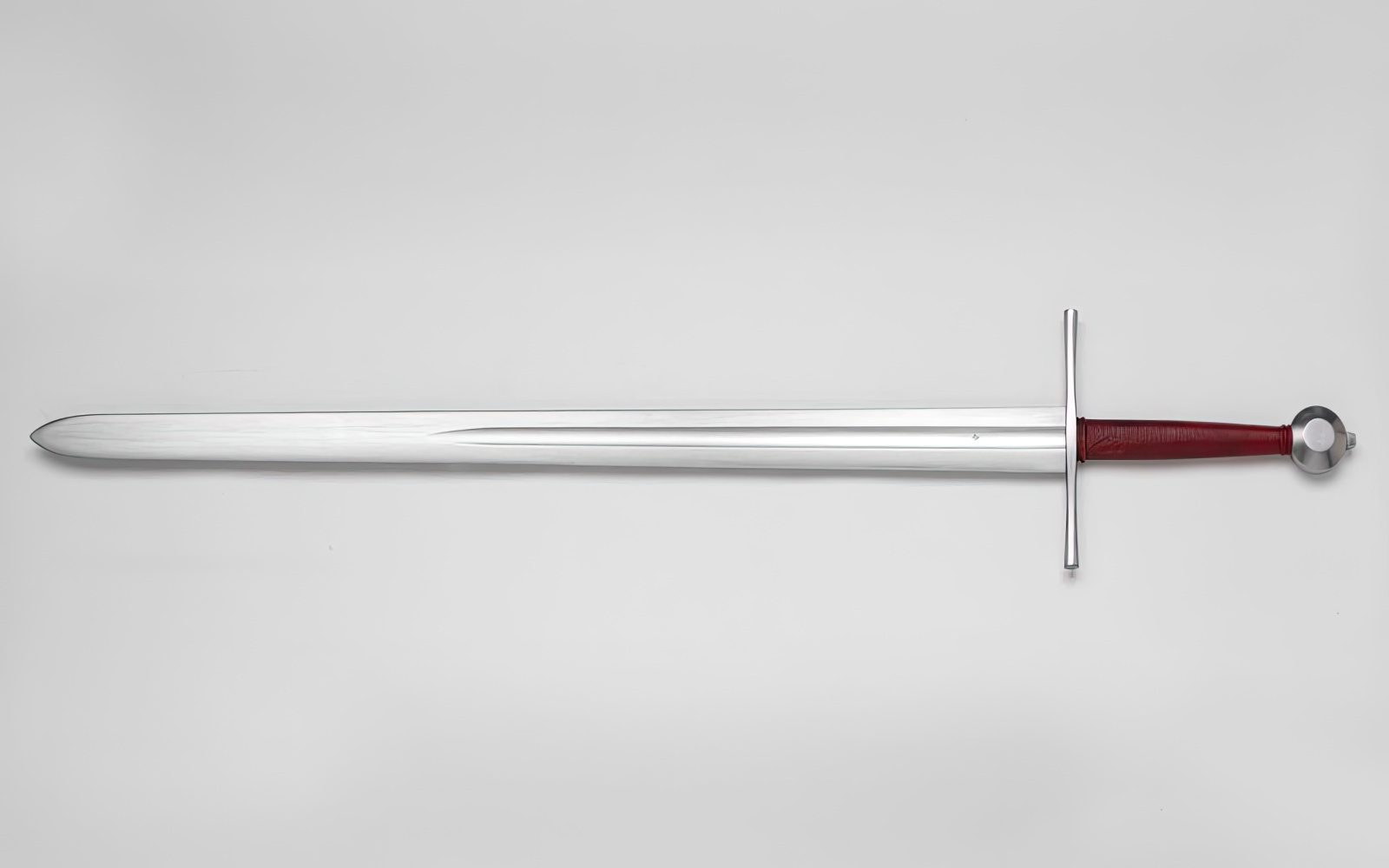
Type XIII swords drastically differed from the previous Oakeshott types and took a unique path in combat. They are the fourth group in the Oakeshott Typology chart of medieval European double-edged swords of the mid-13th and 14th centuries. Type XIII swords were a blade type and trend that would ignite a new fashion of swords meant to hold up against upcoming and increasing armor.
The Oakeshott Typology is a medieval double-edged European sword chart created by Ewart Oakeshott with thirteen parent groups and smaller sub-types. It is a continuation of previous European viking and migration sword systems created by Jan Peterson and Sir Robert Eric Mortimer Wheeler. Ewart Oakeshott is known as the “most distinguished modern commentator” who researched swords for over half a century.
This article will delve into the world of type XIII swords. We will first explore their unique characteristics and what sets them apart from different blade types in Oakeshott’s Typology. Then, we will look into the two sub-types and how they are used differently yet have similar traits. We will then explain how the type XIII was best used by different warriors and touch upon its history.
Characteristics of Type XIII Swords

Type XIII swords have a distinct shape and characteristics that set them apart from other Oakeshott types. These swords took a different route from most other Oakeshott contemporary blades that had begun to taper to a singular point, focusing on thrusting strikes. Instead, they featured larger proportions with much broader blade profiles.
Blade

The blade of the type XIII sword is much larger than previous types, with the exception of the sub-type XIIa. It is straight with double-sharpened edges that are broad, flat, and nearly parallel throughout the length of the blade, only to have a strong taper near its tip. The flattened cross-section of the blade profile is lenticular, with a fuller that runs through its center. Some examples feature more fullers as well.
This fuller is around half the blade’s length, so the second half of the blade is wide and flat, enhancing its cutting potential. The tip of type XIII swords are spatulated and rounded, which is different than the previous larger type XIIa blade that tapers more sharply to its tip. The tang underneath the blade is flat with an almost square cross-section. This parent group has a heavy slashing blade, with some examples having broader blades.
Hilt (Guard and Pommel)
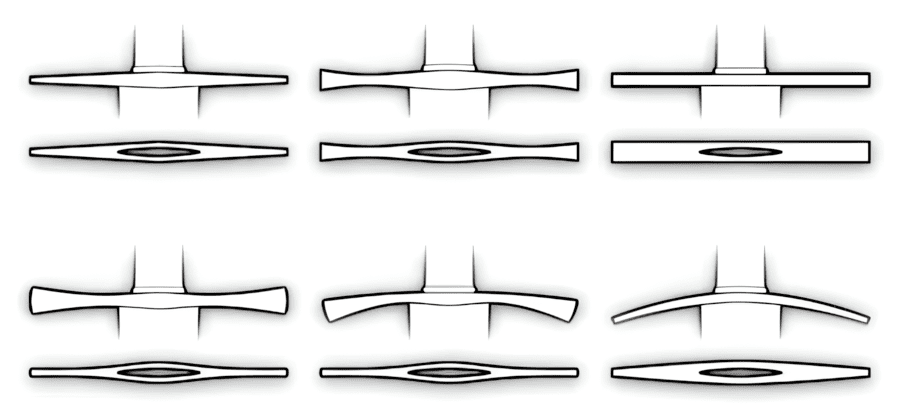
The hilt of the type XIII sword is much larger than the previous one, making up for the larger, heavier, and broader blade. It is in the hand-and-a-half category, with some sub-types being two-handed weapons. The crossguards of type XIII swords are also wider but simple and straight in design, with a rarity of curved guards.
The pommel of the type XIII is simple but usually larger to compensate for the broader and heavier cutting blade. Also, these sword types were hand-and-a-half or two-handed, which needed a larger back-stopper pommel so the sword wouldn’t slip out when slashing from a mounted or ground position. The most common pommel types are the Brazil nut or various disc types.
Size and Weight

Oakeshott type XIII swords are generally much larger than the previous types in their hilts and blades. This was primarily done so they could function as a powerful chopping tool and as an upgrade of previous blades so that they could be more damaging to enemy armor.
The average blade length of the parent type XIII sword was from 30 to 35 inches (76 to 89 cm), with a hilt length of around 6 inches (15 cm), allowing it to be used as a one or two-handed weapon for powerful chopping attacks. These swords were an overall length of around 40 inches (100 cm) and weighed around 3 to 3.5 lbs (1.4 to 1.6 kg), depending on their size.
Sub-Type XIIIa

The sub-type XIIIa is the more popular version of the type XIII, with more examples and depictions in historical texts and art. It has identical characteristics to its parent type, except that it is much larger in overall size and weight. This made it a devastating two-handed weapon that was very effective on the battlefields. This weapon was frequently used during the Scottish Wars of Independence.
The XIIIa is sometimes referred to as an early Medieval “Great Sword” or “Great Sword of War,” largely thanks to its massive size and broad blade with an emphasis on cutting. It could feature a blade as large as 40 inches (102 cm) with a two-handed hilt close to nine inches (23 cm). This sub-type was popular and used longer than its parent type.
Sub-Type XIIIb

The Oakeshott sub-type XIIIb is almost a direct opposite of its other sub-type. It has the same blade and hilt characteristics. However, it isn’t a hand-and-a-half or a two-handed sword. It was a typical knightly or European arming sword used with one hand in conjunction with a shield.
Its blade is shorter, around 31 inches (79 cm), but also as broad as the parent type XIII, which made it effective for footmen encountering new types of armor. This type of XIII sword was favored by cavalrymen who could deal devastating cutting attacks combined with the momentum of being on horseback.
Uses for the Type XIII Swords
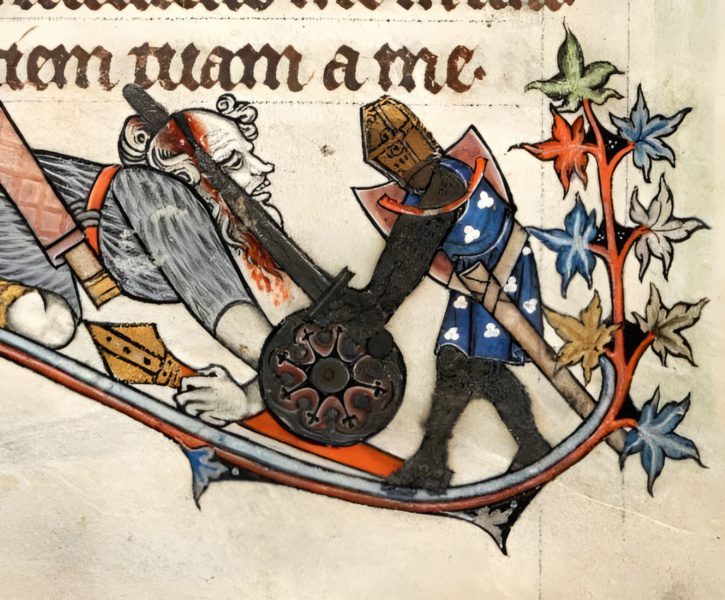
Type XIII swords were effective cutting and chopping tools used by many warriors of Europe, whether mounted or on foot. They were most popular before the rise of plate armor, and their attribute was the ability to slash through unarmored, lightly armored, or chainmail-armored opponents—the blade geometry of the weapons focused on powerful and lethal cuts.
The parent XIII type was a larger and broader bastard sword that was used primarily as a one-handed weapon but could be used as an effective two-handed cutting tool. When used by European knights on horseback, it could be used as a primary two-handed slashing weapon. The sub-type XIIIa, which was more impressive in design, could be used as a solid longsword with larger power in its cutting attacks.
History and Historical Examples of Type XIII Swords
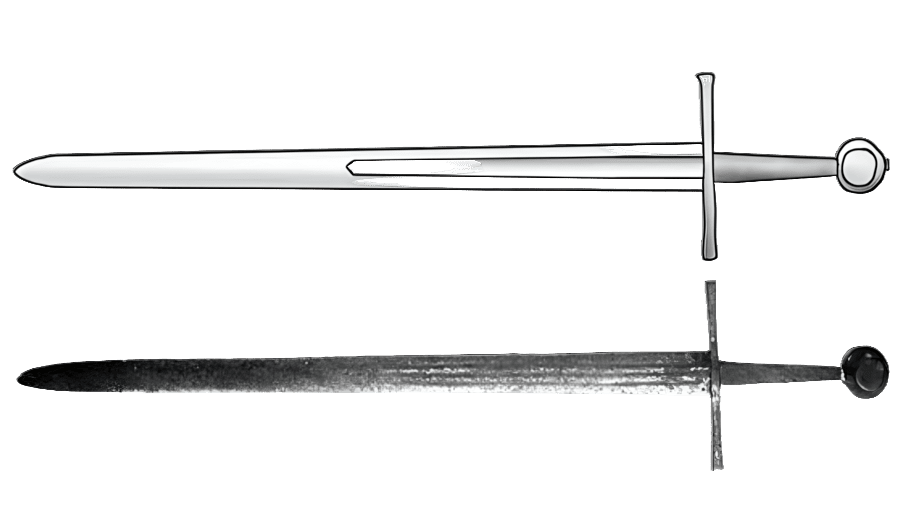
The High Middle Ages of Europe is known for its vicious battles and the advancement of weaponry and armor. The switch to the plate armor wasn’t instantaneous, as some people might assume. The improvement in armor was gradual. By the end of the 13th century, mail chausses, hauberks, and hardened leather were standard, along with the progressive addition of individual pieces of plate armor in vulnerable parts of the body.

To counter these improvements, swords were developed with either a pointed and thrusting attribute or the cutting power of the previous blades was elevated. The type XIII sword and especially its sub-type XIIIa followed the latter. These became effective weapons that broke from the one-handed norm that had existed for centuries and were referred to in historical scripts as “Great Swords” or “The Big Swords of Germany.”

Type XIII wasn’t as popular as the XIIIa sub-type but was still seen in medieval art, such as the Alphonso Psalter, and used by warriors from Germany, Scotland, England, Spain, and many other European countries. The accepted time frame of their use was between 1240 and 1350. Some could be traced back as early as the 12th century, and some may have been used through the middle of the 15th century.

Type XIII and its sub-types were used a bit differently, but generally, the cutting arming swords of Europe were used against lightly armored and unarmored opponents. The XIII shows that not all European warriors were fully dressed in heavy armor and that chopping swords were abandoned with the rise of the pointed thrusting swords. Sometimes, they are called bastard swords or hand-and-a-half swords. Today’s most popular Type XIIIa sword is the Wallace Sword in Scotland, used by the legendary knight who fought for Scottish freedom, Sir William Wallace.

The smaller XIIIbs were simple one-handed arming swords with a broad blade that made them excel at cutting and are frequently linked with European cavalry forces.
